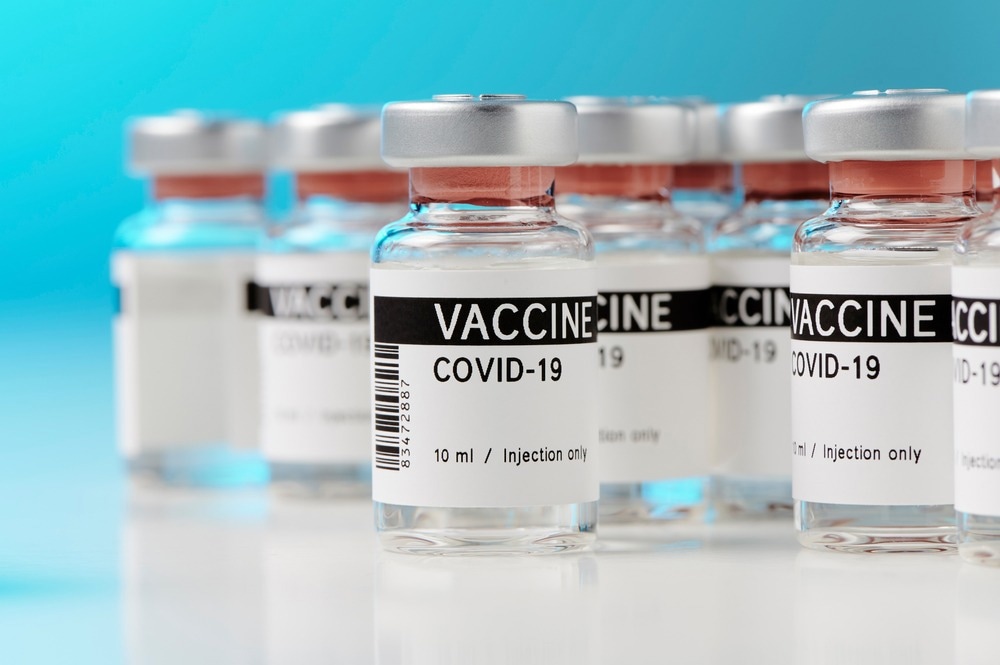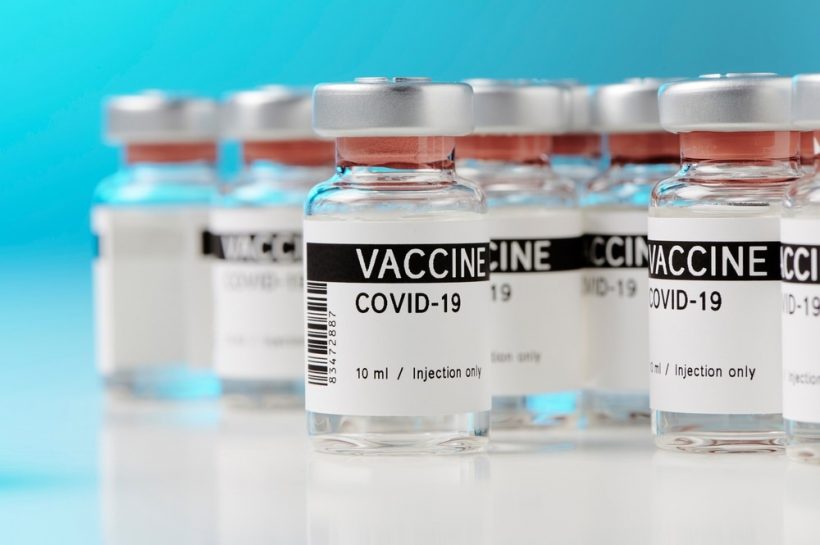In a recent study posted to the medRxiv* server, researchers evaluated the vaccine effectiveness (VE) of half-doses of AZD1222 or BNT162b2 coronavirus disease 2019 (COVID-19) vaccines as a booster dose following primary series vaccination with CoronaVac.

Background
Both AZD1222 or BNT162b2 vaccines are based on messenger ribonucleic acid (mRNA) vaccine technology. On the contrary, CoronaVac, a widely used COVID-19 vaccine in Thailand, is an inactivated virus vaccine. Its immunogenicity and VE are limited against severe acute respiratory syndrome coronavirus 2 (SARS-CoV-2) variants of concern (VOCs), Delta (B.1.617.2), and Omicron, especially BA.1 (B.1.1.529).
The neutralizing antibodies (nAbs) elicited by the two-dose regimen of CoronaVac wanes in nearly three to four months resulting in breakthrough infections, severe COVID-19, and deaths. Studies have shown that booster doses of mRNA vaccines could again increase nAb titers when administered at appropriate intervals post-primary series.
Like many other low- and middle-income countries, Thailand also faced a shortage or limited vaccine supply. Thus, there is an urgent need to explore different vaccination strategies, including dose stretching, fractional dosing, and vaccine platform combinations. Of these, fractional dosing or dose reductions are one of the most appealing because it helps conserve vaccine supplies while increasing coverage without compromising immunogenicity. Further, it could help broaden population coverage and herd immunity in resource-limited countries to reduce COVID-19-related mortality.
Several studies have shown that prolonged booster intervals enhance immunogenicity by allowing antibodies to mature for longer. For instance, a study showed that only 56% of short-interval vaccine recipients versus 100% of prolonged-interval vaccine recipients had Omicron-neutralizing antibodies. Over 65% of them even had Omicron-neutralizing antibodies at four to six months post-booster.
Even the World Health Organization (WHO) now recommends an interval of four to six months post-primary series, especially in the face of Omicron dominance, for heterologous and homologous booster schedules. However, no studies have specifically analyzed the full dose vs. half dose of AZD1222 or BNT162b2 boosters after CoronaVac two doses.
About the study
In the present double-blinded study, researchers accounted for both dosage amount (full vs. half) and the interval between primary and booster vaccination (three different intervals) to evaluate the immune responses and safety of AZD1222 or BNT162b2 booster doses. The team divided 1320 healthy study participants aged 20 years or older into two cohorts comprising 660 individuals each. Further, they divided them into three interval-stratified subgroups, each of which they randomly assigned in a 1:1 ratio to either half-dose or full-dose AZD1222 or BNT162b2 vaccine, abbreviated as AZHD, AZFD, PFHD, and PFFD.
The team monitored all participants on days 28, 60, and 90 after vaccination. For vaccine safety data, they made evaluations on days 7, 28, 69, and 90. They collected blood samples at baseline and on days 28, 60, and 90 to evaluate humoral immunity and from 50% of participants of each subgroup on day 28 for T-cell-mediated immunity evaluations.
While the researchers monitored all the participants for immediate adverse events (AEs), they also recorded solicited AEs for up to seven days. Furthermore, they recorded AEs of special interest (AESI), medically-assisted AEs (MAAEs), and serious AEs (SAE) till day 90. The team quantified anti-spike (S) and anti-nucleocapsid (N) nAb titers using a validated enzyme-linked immunosorbent assay (ELISA) at baseline and days 28, 60, and 90 following vaccination. They presented the results as geometric mean concentrations (GMC) and geometric mean fold rise (GMFR) from baseline, with a 95% exact confidence interval (95%CI). Furthermore, the researchers quantified vaccination-induced nAb inhibition of SARS-CoV-2 seroresponse using SARS-CoV-2 pseudovirus neutralization assay (PNA).
The researchers further evaluated samples that attained over 90% inhibition or 100% inhibition in PNA for 50%-neutralizing titer (NT50) of geometric mean titers (GMT) against ancestral, Delta, and Omicron pseudovirus S proteins (PVNT).
Study findings
The primary study finding was that half vaccine doses were safe, with no vaccine-related or life-threatening AE. Although rare, previous studies have documented thrombocytopenia syndrome (TTS) after vaccination with AZD1222. However, the same vaccine caused no TTS in the current study at half- or a full dose. Moreover, both half-dose AZD1222 and BNT162b2 elicited humoral and T cell immune responses, as observed in anti-S IgG, PNA, microNT, and IFN-Y assays.
The efficacy of both doses of AZD1222 and BNT162b2 persisted at all time intervals, including 90 to 120 days after primary-series CoronaVac. However, seroconversion declined slightly with longer intervals in half-dose recipients but slightly slowly in full-dose recipients. Subsequently, the authors noted that at day 90, the half-dose immune response waned more rapidly than the full-dose immune response. Encouragingly, the immune response triggered by a half dose of any vaccine at day 28 was robust and non-inferior to that elicited by a full dose. In addition, seroconversion and T-cell induction rates were markedly high even at 120 days post-primary CoronaVac series (long interval).
Conclusions
The current study detected non-inferiority of the two doses (full and a half) of the same vaccine and booster dose intervals against SARS-CoV-2 variants to understand ways to maintain high levels of immunogenicity when vaccine doses are limited. It remarkably demonstrated that in terms of immunogenicity, half-dose AZ1222 and half-dose BNT162b2 293 boosting was non-inferior to their full-dose counterparts.
The results did not change with longer boosting intervals and against the Omicron VOC though nAb titers declined gradually from the ancestral strain to Delta and further to Omicron. Half-doses did not also compromise safety. Overall, the fractional dosing strategy exhibited the potential to mitigate supply constraints, especially in resource-limited settings, and ensure high vaccination coverage.
*Important notice
medRxiv publishes preliminary scientific reports that are not peer-reviewed and, therefore, should not be regarded as conclusive, guide clinical practice/health-related behavior, or treated as established information.
- Niyomnaitham, S. et al. (2022) "Immune responses of the third dose of AZD1222 vaccine or BNT162b2 mRNA vaccine after two doses of CoronaVac vaccines against Delta and Omicron variants". medRxiv. doi: 10.1101/2022.10.02.22280572. https://www.medrxiv.org/content/10.1101/2022.10.02.22280572v1
Posted in: Medical Science News | Medical Research News | Disease/Infection News
Tags: Antibodies, Assay, Blood, Cell, Coronavirus, Coronavirus Disease COVID-19, covid-19, Efficacy, ELISA, Enzyme, Homologous, Immune Response, immunity, Mortality, Omicron, Pseudovirus, Respiratory, Ribonucleic Acid, SARS, SARS-CoV-2, Severe Acute Respiratory, Severe Acute Respiratory Syndrome, Syndrome, T-Cell, Thrombocytopenia, Vaccine, Virus

Written by
Neha Mathur
Neha is a digital marketing professional based in Gurugram, India. She has a Master’s degree from the University of Rajasthan with a specialization in Biotechnology in 2008. She has experience in pre-clinical research as part of her research project in The Department of Toxicology at the prestigious Central Drug Research Institute (CDRI), Lucknow, India. She also holds a certification in C++ programming.
Source: Read Full Article
